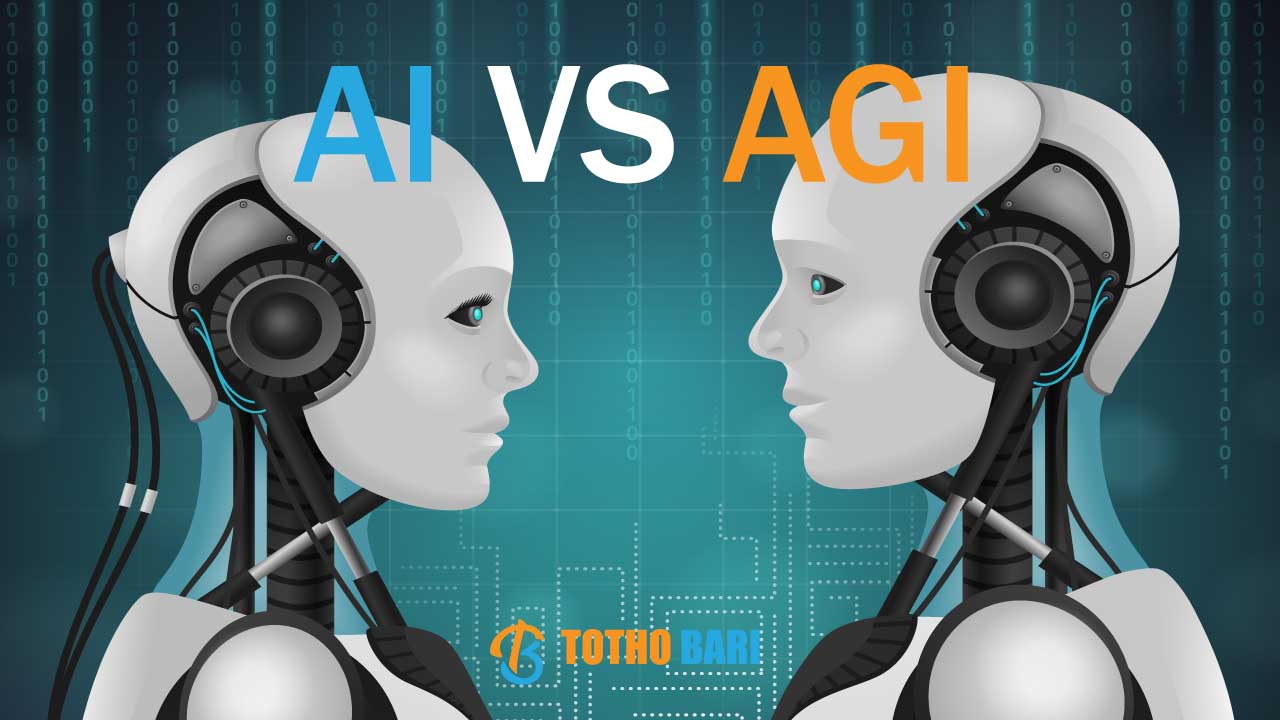Smart machines (AI) are everywhere now! They help us shop, use technology, and much more. But there’s a difference between the smart machines we have today and the even smarter machines people think we might have in the future (AGI). It’s important to understand what these two types are, how they could be good, and how they could be risky so we can make the best decisions about how to develop smart machines in the future.
Data and Learning:
- Current AI: AI systems need lots of examples to learn and get better. This makes it hard for them to work in new situations
- AGI: Future AI is expected to learn like humans, not just from data, but also by watching, doing, and thinking. This makes it more flexible and able to handle new things.
Creativity and Innovation:
- Current AI: AI systems are good at acting like humans, but they can’t be truly creative or make new things. Their creations are limited by the information they’ve learned.
- AGI: AGI could think for itself and come up with new ideas. This could help us make big discoveries, create amazing art, and invent incredible things.
Comparing AGI and Current AI
| Feature | AGI | AI | Benefits | Risks |
|---|---|---|---|---|
| Definition | Hypothetical future AI with human-level intelligence and cognitive abilities | Existing AI technology with specific, narrow tasks and no general intelligence | Positive outcomes and advantages of both AGI and AI | Potential negative consequences and dangers of both AGI and AI |
| Capability | Generalizes knowledge, solves problems across domains, learns and adapts to new situations | Focuses on predefined tasks, excels at data analysis and pattern recognition | Improved efficiency, automation of tasks, enhanced decision-making | Job displacement, loss of control, bias and discrimination, existential risk |
| Development Stage | Not yet achieved, currently theoretical | Actively developed and implemented | Significant potential for human progress and well-being | Requires careful consideration of ethical and safety implications |
Additional Differences:
- Data Requirements: AGI needs a bigger and wider variety of data than regular AI to become as smart as a person
- Learning Methods: AGI might need to find new ways to get smarter, while current AI mostly learns by watching and doing.
- Decision-Making: AGI can make its own choices based on its understanding of the world, unlike AI which just follows instructions.
AGI has the potential to greatly improve the capabilities of AI, bringing both exciting possibilities and major challenges. Even though current AI is already having a big impact on the world, the potential benefits and risks of AGI are much bigger and need to be thought through carefully and developed ethically.
Conclusion
This article explains the main differences between AGI and current AI, the good things they could bring, and the dangers they might pose. As we develop AI further, it’s important to stay informed, involved, and committed to making sure AI helps people.
Thanks: Image by macrovector on Freepik

